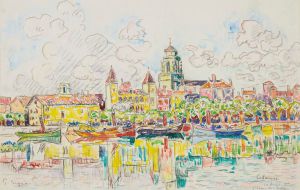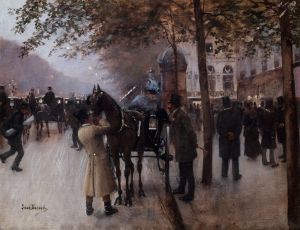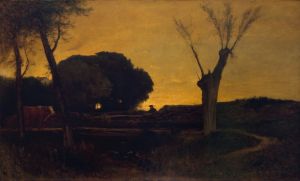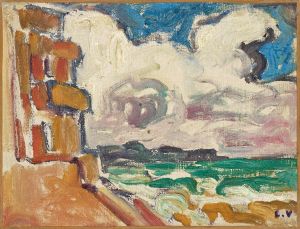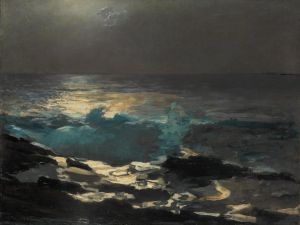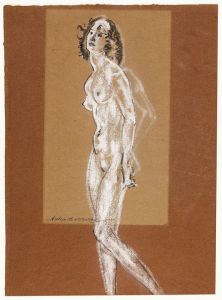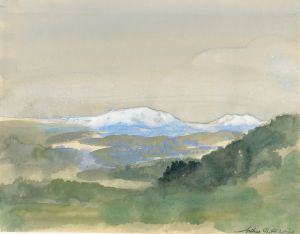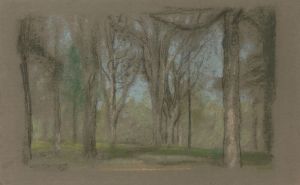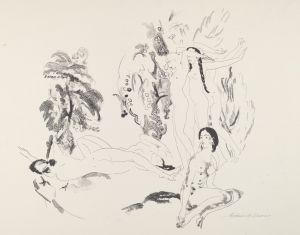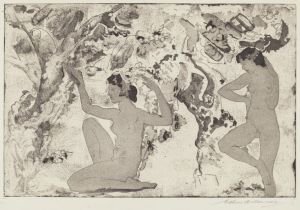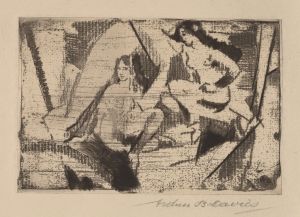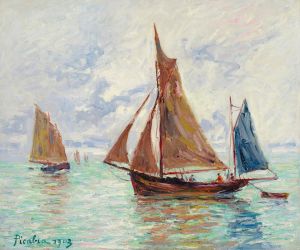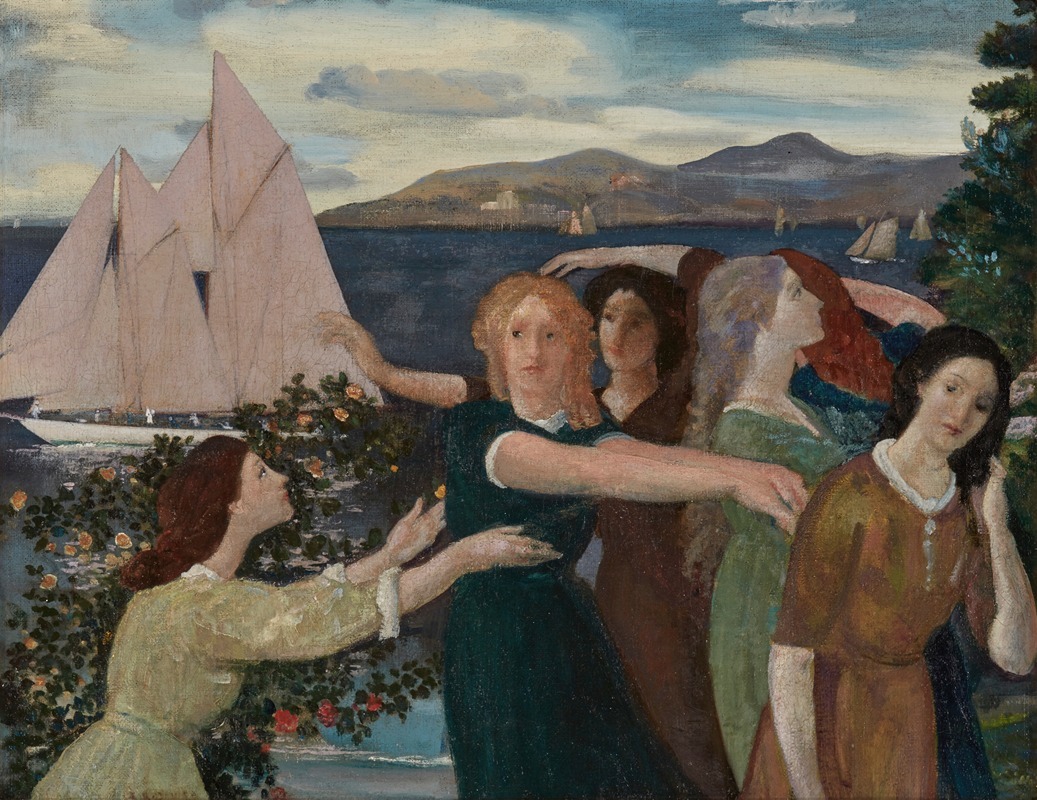
Across The Harbor
A hand-painted replica of Arthur Bowen Davies’s masterpiece Across The Harbor, meticulously crafted by professional artists to capture the true essence of the original. Each piece is created with museum-quality canvas and rare mineral pigments, carefully painted by experienced artists with delicate brushstrokes and rich, layered colors to perfectly recreate the texture of the original artwork. Unlike machine-printed reproductions, this hand-painted version brings the painting to life, infused with the artist’s emotions and skill in every stroke. Whether for personal collection or home decoration, it instantly elevates the artistic atmosphere of any space.
Arthur Bowen Davies was an American artist known for his role in the early 20th-century art movement in the United States. He was a key figure in organizing the Armory Show of 1913, which was pivotal in introducing modern art to the American public. Davies's work often combined elements of symbolism and romanticism, and he was known for his ethereal landscapes and figurative compositions.
"Across The Harbor" is one of Davies's paintings that exemplifies his unique style. While specific details about this particular painting are limited, it is consistent with Davies's broader body of work, which often depicted serene and dreamlike scenes. His paintings frequently featured harmonious compositions that blended natural and human elements, creating a sense of tranquility and otherworldliness.
Davies was born in Utica, New York, in 1862 and studied at the Art Institute of Chicago and the Art Students League in New York City. His early work was influenced by the Hudson River School and the Barbizon School, but he gradually developed a more individual style that incorporated elements of symbolism and modernism. He was associated with the group known as "The Eight," which included artists like Robert Henri and John Sloan, who were known for their opposition to the conservative art establishment of the time.
Throughout his career, Davies was interested in exploring the relationship between the natural world and the human spirit. His landscapes often featured soft, muted colors and fluid forms, creating a sense of movement and harmony. In "Across The Harbor," one can expect to see these characteristics, with a focus on the interplay between land, water, and sky.
Davies's work was not only significant for its aesthetic qualities but also for its role in the broader context of American art history. As president of the Society of Independent Artists and a key organizer of the Armory Show, he played a crucial role in bringing European modernism to the United States. The Armory Show was the first large exhibition of modern art in America, and it introduced the works of artists like Marcel Duchamp, Henri Matisse, and Pablo Picasso to an American audience.
Despite his involvement with modernism, Davies's own work remained somewhat apart from the more radical developments of the time. He maintained a commitment to beauty and harmony, often drawing on classical themes and motifs. His paintings, including "Across The Harbor," reflect a synthesis of traditional and modern elements, making them accessible yet innovative.
Arthur Bowen Davies passed away in 1928, but his legacy continues to be felt in the art world. His work is held in numerous public collections, and he is remembered as a bridge between the 19th-century romantic tradition and the emerging modernist movement of the early 20th century. While "Across The Harbor" may not be as widely recognized as some of his other works, it remains an example of his distinctive approach to art, characterized by its lyrical beauty and contemplative mood.





